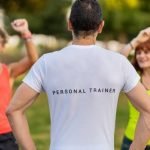Introduction
Exercise science and personal training are key elements in fitness, health, and overall wellbeing. Exercise science combines the latest scientific discoveries, research, and exploration to broaden our understanding of how physical activity impacts human performance and health. Personal training then applies this knowledge to develop tailored programs for individuals seeking improved fitness, health or individual sports performance.
Overall benefits of exercise science and personal trainings include:
1) Improved physical fitness – Regular activities can help improve flexibility, strength, speed, balance, coordination and aerobic capacity.
2) Increased mental wellbeing – Exercise releases endorphins which improve your mood. This can lead to increased levels of happiness as well as lower levels of stress and anxiety.
3) Reduced risk of injury – With guidance from a personal trainer or an exercise physiologist you can learn proper form and technique that will reduce the risk of injury during activities like lifting weights or participating in various sports.
4) Enhanced athletic/sports performance – A personalized plan developed by a knowledgeable professional is essential if you want to improve in any sport or athletic activity.
5) Improved body composition – Through careful dieting and an effective workout routine, exercise scientists and trainers work together to create programs geared towards reducing fat while increasing muscle mass.
Definition of Exercise Science,
Exercise science is an interdisciplinary field which focuses on the study of human health, body movement and physical activity. It encompasses a range of disciplines, including kinesiology, biomechanics, physiology, nutrition and psychology. This scientific discipline is used to analyze and optimize the performance and safety of exercise programs designed to improve physical fitness or address pathological conditions.
Personal Training
Personal training is a profession that involves designing safe, effective exercise programs tailored to meet specific needs of clients and/or athletes. Personal trainers are knowledgeable in areas such as anatomy, kinesiology, exercise science and nutrition. They collaborate with their clients to develop a personalized exercise plan that meets their individual goals while improving overall health and well-being. Most personal trainers will also commonly provide motivational support helping individuals increase motivation for meeting their desired outcomes.
Overview of Exercise Science Careers,
Exercise Science and Personal Training are two related fields offering a wealth of career opportunities to those who have the drive and dedication to pursue them. Exercise Science is the study of physical activity, exercise, and its effects on the body. It involves an in-depth examination into sports medicine, physical therapy, biomechanics, anatomy and physiology, nutrition, strength training and more. Through their studies, exercise scientists gain insight into how the body adapts to physical activity. This knowledge helps them develop effective exercise procedures to achieve optimal health and performance goals for their clients.
Personal trainers use this information from exercise science to help people reach their individual fitness goals safely and effectively. Personal trainers design tailored workout plans that incorporate strength training, cardiovascular exercises, stretching techniques, nutritional advice and lifestyle modifications that maximize results based on the specific needs of each client. They also monitor exercise form during workouts to ensure clients are performing movements correctly to prevent injury and enhance results. In addition to helping clients lose weight or build muscle mass, personal trainers also look out for signs of exhaustion or risk factors associated with different conditions that can be improved by following a healthier lifestyle. With modern technology like telehealth being increasingly used in medical practices today personal trainers are also able to take advantage of these methods in order to offer digital coaching as an application of their expertise within an ever digitizing world. Furthermore broadening career opportunities for exercise science professionals everywhere as online coaching presents greater outreach across higher land mass than tradition fitness models could ever achieve prior.
How Exercise Science Impacts Physical and Mental Health and Wellness,
Exercise science is an interdisciplinary field that focuses on the body’s response to physical activity, exercise, and physical fitness. As a result, its impact on health, and wellness can be profound. Exercise can have a positive effect on both physical and mental health by helping individuals to become stronger, faster and fitter. Physically speaking, it increases muscle mass which strengthens bones and boosts metabolism; it also helps regulate hormones and circulation of the blood. Mentally speaking, exercise has been shown to improve cognitive function, reduce stress levels and improve psychological well-being by increasing self-confidence while promoting relaxation and reducing anxiety levels. Lastly, exercise science promotes healthy lifestyles by encouraging individuals to set goals in order to reach optimal performance such as better cardiovascular endurance or improved strength training outcomes.
The field of exercise science is also closely related to personal training. More specifically, personal trainers work with clients to design tailored programs that cater to their individual needs based on the principles taught in the field of exercise science. Personal trainers help assess an individual’s health condition while at the same time providing guidance on exercises they should do depending on their specific goals or limitations due any existing ailments. Moreover, they provide valuable advice regarding nutrition, lifestyle choices as well as motivation towards change so that individuals are able achieve increased physical performance – a key element in maintaining overall health and wellness over time.
Advantages of Hiring a Credentialed Personal Trainer,
Hiring a credentialed personal trainer has numerous advantages due to their expansive knowledge of exercise science and experience in the field. With a personal trainer, you will be able to use exercises that are tailored to your specific needs, exercise preferences, and health goals. This way, you get more out of your workout sessions because they are personalized for you. Furthermore, a knowledgeable trainer can provide information on safety precautions such as maintaining proper form while doing certain exercises and help with injury prevention. Additionally, they can also design an appropriate nutrition plan that fits your lifestyle and goal attainment. Credentialed trainers also provide motivation by keeping clients accountable and creating achievable goals that promote success. Finally, personal trainers inspire confidence in their clients by recognizing progress when it happens and providing encouragement throughout the entire process.
Common Types of Training Techniques Used by Personal Trainers,
Personal trainers rely on a variety of training techniques when working with their clients to create personalized fitness plans. Many of these techniques are tailored to the specific needs and interests of the individual and may include strength training, cardiovascular exercise, flexibility/mobility, core conditioning, and more.
Strength Training: Strength training is one of the most common forms of personal training. It is designed to help individuals increase strength, muscular endurance, and overall physical performance. Common activities used in strength training programs include barbell exercises such as squats and deadlifts, kettlebells, body weight exercises like push ups and planks, dumbbells, machines such as the leg press or lat pulldown machine, suspension systems such as TRX bands or ViPRs and core exercise movements.
Cardiovascular Exercise: Cardiovascular exercise involves long duration rhythmic movements which use large muscle groups to increase heart rate over time. Activities such as jogging, cycling or swimming can be used as part of a personal trainer’s program design to improve aerobic fitness capacity and overall health.
Flexibility/Mobility: This type of training focuses on improving range of motion – helping individuals move more freely through their day-to-day lives by improving joint mobility or involving dynamic stretching exercises to increase flexibility. Popular activities used in flexibility/mobility programs can include yoga poses such as downward dog or cat-cows , dynamic stretches like leg swings or shoulder presses isometrics stretches like holding a lunge pose for a few seconds and foam rolling with trigger point massage tools .
Core Conditioning: Core conditioning helps build muscular endurance in the core region including abdominals, back muscles glutes , hips ,and hamstrings . Specific activities that are generally included in core conditioning workouts include various forms of planks , sit ups using weighted medicine balls ,Russian twists ,and cable wood chops .
Choosing the Right Personal Trainer For You,
When deciding on a personal trainer, there are several key factors to consider. Firstly, you’ll want to research the credentials of your potential trainer and verify that they have the necessary qualifications for providing an effective workout plan. It is important to determine if a trainer has any certifications or specialized training in areas such as exercise science, strength and conditioning, sports nutrition or physical therapy. It is also important to ask questions regarding their experience with different client types and fitness goals. Once you find a qualified individual who meets your standards, it is also beneficial to observe them working with another client as this can help provide insight into their management style and overall approach. Additionally, it is important to choose someone who displays excellent communication skills and offers a genuine enthusiasm for fitness and wellness which will help motivate you throughout your program. Lastly, it is important to inquire about the cost of the program in order to ensure that the services align with your budget expectations. Taking these points into consideration will allow you to make an informed decision when selecting a personal trainer that best suits your goals.
Actionable Tips for Realistic and Sustainable Exercise Habits,
Exercise science and personal training are two great ways to develop realistic and sustainable exercise habits. Below are some tips to help you get started:
1. Create achievable goals – Set defined and attainable goals that you can work towards so your progress is measurable and more motivating. break the goal down into smaller, easy-to-handle tasks that eventually lead to accomplishing the whole goal.
2. Make use of technology – Today’s technology can be a great asset when it comes to sticking with your exercise plan, from fitness trackers which make tracking your performance easier, to apps for logging reps/sets or even for just monitoring your overall health and nutrition needs.
3. Consider working with a personal trainer – A personal trainer can give advice on proper form, provide motivation when needed and help you target specific areas for improvement in your exercise routine like increasing strength or improving endurance. Plus, the accountability factor makes it much easier to stick with an exercise plan over the long term.
4. Get variety in your workouts – Include a variety of exercises for different muscle groups each day or week as well as varying type (aerobic/resistance/balance), intensity levels and duration/frequency of workouts in order balance out any plateaus in progress plus add interest in continuing to exercise regularly!
5. Track progress – Tracking progress over time will allow you to see how far you’ve come in terms of strength gains, improved endurance etc., which will further motivate you to keep going as well as enable adjustments if needed along the way without having to reset from scratch at any point in time.
Summary
Exercise Science and Personal Training is a great way to help people make the most of their physical abilities. It includes practically applying scientific principles to the study, understanding and proper application of various forms of physical activity. This valuable exercise tool combines psychology, anatomy, physiology and biomechanics in order to create an effective exercise regimen that can include strength and cardiovascular training, flexibility, core stability and postural alignment.
A qualified personal trainer utilizing exercise science is trained to understand how clients at many different fitness levels will be positively challenging themselves, while reducing the risk of injury or exhaustion. Moreover, an experienced instructor helps ensure that no matter what your goals are – whether you’re looking to increase strength, enhance cardiovascular health, or improve balance – you are performing exercises tailored specifically for you based on your ability level. Furthermore, this type of program develops holistic health – addressing both mental and physical impairments – through the careful observation of your movements during performance evaluation tests allowing for appropriate corrective strategies when necessary.
Overall, Exercise Science and Personal Training offers long-term benefits for people who want to maximize their potential by working with someone who understands the potential risks and rewards associated with each exercise routine. They can help keep motivation high so sustained gains are achieved over time. Additionally personalized instruction instills confidence in one’s capability; recognizing improvement in strength and physicality firsthand and contributes directly towards improving overall health outcomes.
Final Thoughts
Exercise science and personal training are essential tools for achieving optimal health and wellness. The combination of exercise science and personal training provides individuals with the knowledge and skills required to make informed decisions about their health and lifestyle; this includes knowledge of proper exercising and nutrition, as well as the motivation to incorporate healthy behavior changes into daily life. Personal trainers can also provide guidance that goes beyond physical activity to include strengthening of mental and emotional health, such as teaching coping strategies, showing the importance of having inspiring relationships with family and friends, setting measurable goals, and finding ways to reduce stress.
By taking advantage of exercise science in conjunction with personal training, individuals can gain insight into their bodies’ needs while being empowered towards moving forward in a more confident way. Exercise programs should be tailored to each person’s abilities, needs, and goals; this will help ensure that any potential setbacks are addressed early, which increases the likelihood of success for that individual. Additionally, supervised exercise sessions provide an invaluable opportunity for people to learn new skills related to form and technique from a certified professional.
Achieving optimal health requires an ongoing commitment that involves consistent effort over time; exercise science provides the information needed for creating healthy habits that become part of trusting one’s own natural gifts in staying motivated throughout the journey. Partnering with a personal trainer equipped with an understanding of both exercise science principles and best practices for human behavior change helps even further by providing accountability; this often results in greater confidence embracing long-term dedication towards better wellbeing. With access to current scientific research coupled with personalized support provided by qualified professionals utilizing evidence-based approaches — anyone can maximize their potential in achieving lasting positive outcomes promoting overall wellness.

Passionate about providing useful information to anyone with an interest in the field of Personal Training, I strive to pass on to our readers quality information and to answer any questions about Personal Trainers, the work they do and how to become one.





